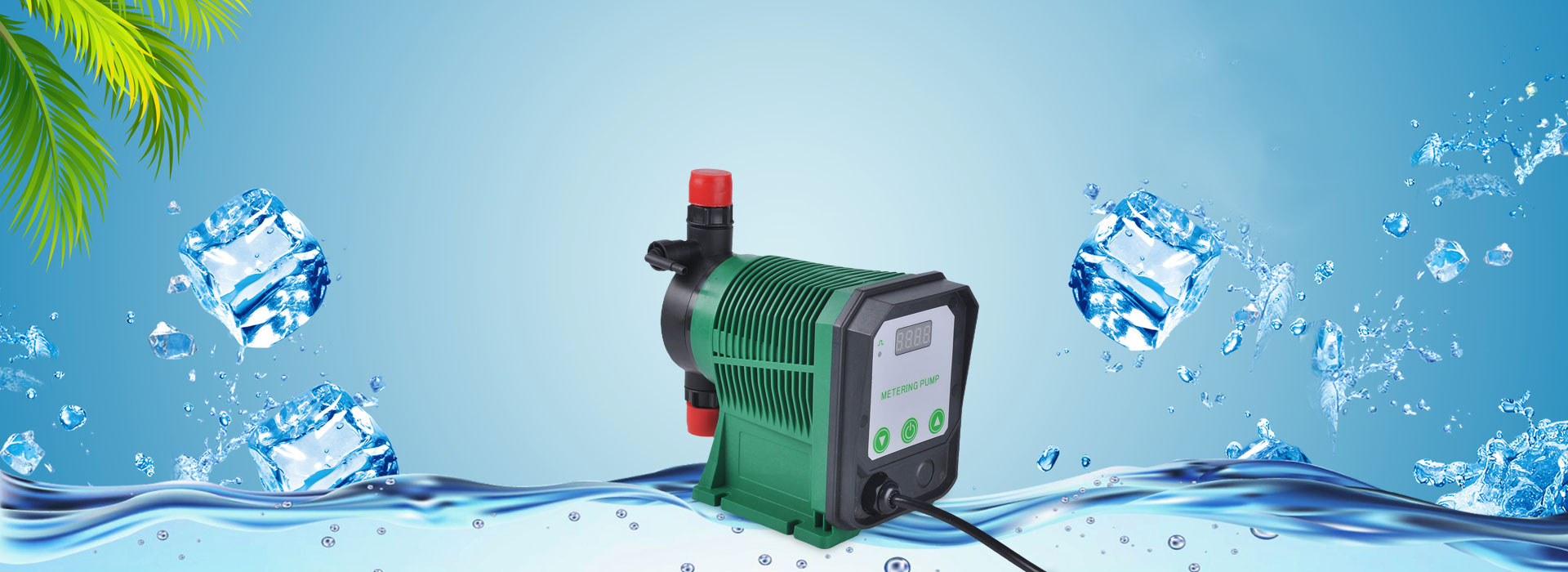- English
- Español
- Português
- русский
- Français
- 日本語
- Deutsch
- tiếng Việt
- Italiano
- Nederlands
- ภาษาไทย
- Polski
- 한국어
- Svenska
- magyar
- Malay
- বাংলা ভাষার
- Dansk
- Suomi
- हिन्दी
- Pilipino
- Türkçe
- Gaeilge
- العربية
- Indonesia
- Norsk
- تمل
- český
- ελληνικά
- український
- Javanese
- فارسی
- தமிழ்
- తెలుగు
- नेपाली
- Burmese
- български
- ລາວ
- Latine
- Қазақша
- Euskal
- Azərbaycan
- Slovenský jazyk
- Македонски
- Lietuvos
- Eesti Keel
- Română
- Slovenski
- मराठी
- Srpski језик
Configuration of dosing device
2022-01-05
1、 Composition of dosing device
The dosing device is mainly composed of solution tank, agitator, medicine tank, metering pump, liquid level gauge, electric control cabinet, pipeline, valve, safety valve, back pressure valve, check valve, pulsation damper, pressure gauge, Y-type filter, etc. It is widely used in raw water, boiler feed water, oilfield surface gathering and transportation dehydration treatment system of power plant, various dosing systems, circulating water treatment and wastewater treatment systems of petrochemical industry.
2、 When does the dosing device need to be equipped with a dissolving device?
1. Solid agent dosing
If the solid agent is directly added to the water, the first is that the dosing method is troublesome, and the second is that the dosing concentration is not easy to control. Therefore, the dosing of solid agent generally needs to be configured into liquid agent first, and then added through the metering pump; Common PAC dosing device, PAM dosing device, calcium chloride dosing device, sodium carbonate dosing device, sodium hydroxide dosing device, phosphate dosing device, sodium pyrosulfite dosing device, etc.
2. When liquid reagent needs to be diluted and added
If the concentration of liquid reagent is relatively high, it is generally diluted with water to 5-10% and then added; Such as hydrochloric acid dosing device, ammonia dosing device, sub sodium dosing device, sulfuric acid dosing device, denitration urea solution dosing device, etc.
3、 When is the dispensing machine used?
1. The configuration of solid agents can be used;
2. When the solid dosage is relatively large and the labor intensity of manual configuration is relatively high, the medicine dispensing machine shall be used for dispensing.
4、 Does the circulating water dosing device need a dissolving device?
We do not think it is necessary or necessary; The common corrosion and scale inhibitor, bactericide and dilute sulfuric acid added by the circulating water dosing device are liquid agents, which will be diluted immediately when they are added into the circulating water system. If you add them after dilution, it is equivalent to doing more water replenishment work for the constant pressure water supply device. The working hours have increased, and no one has thought of you.
Although the circulating water dosing device does not need to be diluted, the material of the dosing pipeline needs to be noted. If it is not for the circulating dilution dosing, the reagent concentration is too high, and the pipeline corrosion needs to be considered.
5、 Does the dosing device need a back pressure valve
1. Circulating water dosing device: the outlet pressure of the metering pump is relatively stable, which we think can be omitted; However, the return of safety valve is indispensable.
2. Sewage dosing device: the back pressure valve of dosing device of sewage system depends on the specific situation; If PAC \ PAM is added to the penstock for air flotation and filtration, it can not be used. Only check valve can be installed.
If the outlet pressure is relatively small or the installation position of the dosing device is relatively high, a back pressure valve must be installed when the second outlet is relatively low to prevent siphonage.
6、 Does the dosing device need a pulse damper?
First look at the function of pulse damper, which is a common device to eliminate pulse and water hammer caused by reciprocating pump in pipeline It uses the compressibility of the gas in the cavity to store and release the liquid, so as to reduce the fluctuation of pressure and flow in the pipeline.
From his role, it is essential! What kind of damper to choose?
It can be roughly divided into three forms: diaphragm pulse damper, airbag pulse damper and air chamber pulse damper. Their selection is different because of their own structural characteristics and cushioning effect.
1. Diaphragm pulse damper
The diaphragm type pulse damper is divided into upper and lower shells, with a layer of fluoroplastic diaphragm in the middle. Its cushioning effect is much better than that of the air chamber type. The biggest advantage is that the precharged gas is separated from the liquid in the pipeline, which is more convenient for maintenance.
2. Airbag pulse damper
The biggest advantage of air bag pulse damper is that it can withstand high pressure. Its structure is to add an air bag in the air tank, which is filled with gas with a certain pressure. In the pipeline, the liquid in the pipeline compresses the air bag, the air bag shrinks and then expands, so as to play a cushioning effect. However, the general cost of air bag pulse damper is high, The production cycle of airbags made of special materials is relatively long.
3. Air chamber pulse damper
The dosing device is mainly composed of solution tank, agitator, medicine tank, metering pump, liquid level gauge, electric control cabinet, pipeline, valve, safety valve, back pressure valve, check valve, pulsation damper, pressure gauge, Y-type filter, etc. It is widely used in raw water, boiler feed water, oilfield surface gathering and transportation dehydration treatment system of power plant, various dosing systems, circulating water treatment and wastewater treatment systems of petrochemical industry.
2、 When does the dosing device need to be equipped with a dissolving device?
1. Solid agent dosing
If the solid agent is directly added to the water, the first is that the dosing method is troublesome, and the second is that the dosing concentration is not easy to control. Therefore, the dosing of solid agent generally needs to be configured into liquid agent first, and then added through the metering pump; Common PAC dosing device, PAM dosing device, calcium chloride dosing device, sodium carbonate dosing device, sodium hydroxide dosing device, phosphate dosing device, sodium pyrosulfite dosing device, etc.
2. When liquid reagent needs to be diluted and added
If the concentration of liquid reagent is relatively high, it is generally diluted with water to 5-10% and then added; Such as hydrochloric acid dosing device, ammonia dosing device, sub sodium dosing device, sulfuric acid dosing device, denitration urea solution dosing device, etc.
3、 When is the dispensing machine used?
1. The configuration of solid agents can be used;
2. When the solid dosage is relatively large and the labor intensity of manual configuration is relatively high, the medicine dispensing machine shall be used for dispensing.
4、 Does the circulating water dosing device need a dissolving device?
We do not think it is necessary or necessary; The common corrosion and scale inhibitor, bactericide and dilute sulfuric acid added by the circulating water dosing device are liquid agents, which will be diluted immediately when they are added into the circulating water system. If you add them after dilution, it is equivalent to doing more water replenishment work for the constant pressure water supply device. The working hours have increased, and no one has thought of you.
Although the circulating water dosing device does not need to be diluted, the material of the dosing pipeline needs to be noted. If it is not for the circulating dilution dosing, the reagent concentration is too high, and the pipeline corrosion needs to be considered.
5、 Does the dosing device need a back pressure valve
1. Circulating water dosing device: the outlet pressure of the metering pump is relatively stable, which we think can be omitted; However, the return of safety valve is indispensable.
2. Sewage dosing device: the back pressure valve of dosing device of sewage system depends on the specific situation; If PAC \ PAM is added to the penstock for air flotation and filtration, it can not be used. Only check valve can be installed.
If the outlet pressure is relatively small or the installation position of the dosing device is relatively high, a back pressure valve must be installed when the second outlet is relatively low to prevent siphonage.
6、 Does the dosing device need a pulse damper?
First look at the function of pulse damper, which is a common device to eliminate pulse and water hammer caused by reciprocating pump in pipeline It uses the compressibility of the gas in the cavity to store and release the liquid, so as to reduce the fluctuation of pressure and flow in the pipeline.
From his role, it is essential! What kind of damper to choose?
It can be roughly divided into three forms: diaphragm pulse damper, airbag pulse damper and air chamber pulse damper. Their selection is different because of their own structural characteristics and cushioning effect.
1. Diaphragm pulse damper
The diaphragm type pulse damper is divided into upper and lower shells, with a layer of fluoroplastic diaphragm in the middle. Its cushioning effect is much better than that of the air chamber type. The biggest advantage is that the precharged gas is separated from the liquid in the pipeline, which is more convenient for maintenance.
2. Airbag pulse damper
The biggest advantage of air bag pulse damper is that it can withstand high pressure. Its structure is to add an air bag in the air tank, which is filled with gas with a certain pressure. In the pipeline, the liquid in the pipeline compresses the air bag, the air bag shrinks and then expands, so as to play a cushioning effect. However, the general cost of air bag pulse damper is high, The production cycle of airbags made of special materials is relatively long.
3. Air chamber pulse damper
The air chamber pulse damper is like adding a coke can with a pressure gauge on the pipeline. The liquid directly compresses the air inside to play a buffering effect, but its biggest disadvantage is that the air in the damper will gradually dissolve into the medium, resulting in less and less compressible air volume and less buffering effect, It is necessary to remove the damper from the equipment and connect it with the atmosphere again to ensure the internal volume, so it is a little troublesome to maintain in the process of use, but its cost is relatively low, so it is suitable for some systems that do not have too high buffer requirements.


